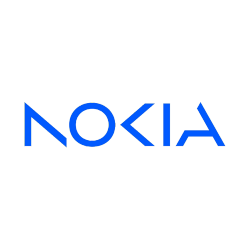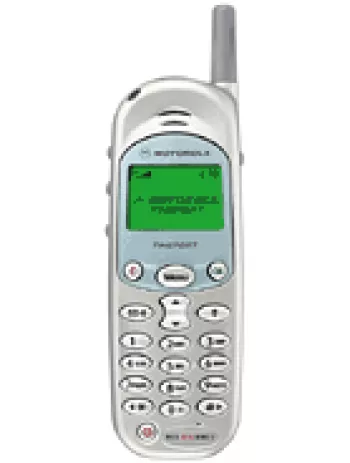
Overview of Motorola V360
The Motorola V360, launched in the first quarter of 2005, was a compact feature phone that combined basic functionality with a stylish design. Aimed at the mid-range market, the V360 offered users a practical device with essential mobile features. Its flip-phone form factor was popular during its time, providing both portability and a sense of sophistication.
Design and Build
The Motorola V360 was designed with compactness in mind, boasting dimensions of 90 x 47 x 24 mm and a weight of 104 grams. This made it easy to carry around, fitting comfortably in pockets and small bags. The use of a Mini-SIM card and its silver color gave it a sleek and elegant appearance. The phone’s physical build comprised durable materials, ensuring it could withstand the occasional drop or bump.
Display Features
The V360 featured a TFT display capable of showing up to 256K colors. With a screen size of 1.9 inches and a resolution of 176 x 220 pixels, it provided a decent visual experience for its time. The screen-to-body ratio of approximately 26.9% ensured that the display was just large enough for user interaction and navigation. The 148 ppi pixel density, although not impressive by today's standards, was adequate for viewing basic images and menu options.
Camera Capabilities
Equipped with a VGA camera, the Motorola V360 allowed users to capture photos with a resolution suitable for viewing on the phone's screen or sending via MMS. Although not intended for high-quality photography, the camera fulfilled the needs of users who were looking to capture quick snapshots. The inclusion of video recording was an added bonus, offering a functional but simple way to capture moments.
Memory and Storage
Internally, the V360 came with 5MB of storage, which could be expanded using a microSD card slot. This allowed users to store additional media files such as ringtones and images. The phone’s capability to maintain a comprehensive phonebook of 1000 x 10 fields with photo call features was a highlight. The call record functionality further complemented user needs by storing 10 dialed, 10 received, and 10 missed calls.
Connectivity and Communication
The V360 was part of the GSM network using 2G bands with coverage for GSM 900/1800/1900. This ensured reliable connectivity for voice calls and SMS in many parts of the world. GPRS Class 10 and EDGE Class 10 technologies facilitated basic mobile internet access, although the experience was limited by today’s standards. Bluetooth 1.2 allowed for wireless audio and file transfers, and USB connectivity was provided via a miniUSB port.
User Interface and Applications
As a feature phone, the Motorola V360 provided a straightforward user interface with easy navigation through its menu options. Messaging options included SMS, MMS, Email, and Instant Messaging, catering to various communication preferences. The phone supported Java MIDP 2.0, allowing users to download basic Java applications and games, thus enhancing its utility and entertainment value. The WAP 2.0/xHTML browser offered limited internet browsing capability.
Audio and Multimedia
The V360 was equipped with a loudspeaker capable of playing polyphonic, MP3, and AAC ringtones, supporting a personalized audio experience. Despite the absence of a 3.5mm jack, the phone allowed for downloadable ringtones and featured a composer for creating custom tones, adding to the personalization aspect that users appreciated during that era.
Battery Life and Performance
The Motorola V360 was powered by a removable 810 mAh Li-Ion battery, providing standby time of up to 240 hours and talk time of up to 7 hours and 30 minutes. An optional extended battery (1010 mAh) improved standby and talk times to 300 hours and 9 hours respectively, making it suitable for users needing longer battery life. This aspect was particularly appealing to those frequently on the move, ensuring that the phone remained functional throughout the day.
Market Impact and Legacy
At an approximate price of 80 EUR when released, the Motorola V360 was competitively priced, appealing to a broad range of consumers seeking a reliable and stylish mobile phone. Its combination of features, durability, and reasonable cost contributed to its success in the market. Even today, the V360 is remembered fondly as part of the classic era of feature phones, illustrating Motorola's impact on mobile communication during the 2000s.
Key Features of Motorola V360
- Supports GSM 900 / 1800 / 1900 networks with GPRS and EDGE class 10 technology.
- Compact design with dimensions of 90 x 47 x 24 mm and a weight of 104 g.
- Display: 1.9 inches TFT, 256K colors with a resolution of 176 x 220 pixels.
- Expandable memory via microSD card slot.
- VGA main camera with video recording capability.
- Bluetooth 1.2 for wireless connectivity.
- Removable Li-Ion battery with up to 9 hours talk time with an extended battery.
- Messaging capabilities including SMS, MMS, Email, and Instant Messaging.
- Java MIDP 2.0 support for applications.
- Affordably priced at about 80 EUR.
Disadvantages of Motorola V360
- Limited internal memory with only 5MB storage.
- VGA camera offering very low resolution for images.
- No GPS positioning feature available.
- No built-in radio.
- Lacks WLAN connectivity.
- No 3.5mm headphone jack for audio output.
- Discontinued model, making new units hard to find.
- The display size is relatively small by modern standards.
- No front-facing (selfie) camera.

View Also
More Phones
All Rights Reserved +14069 Phones © Mobilawy 2025

























